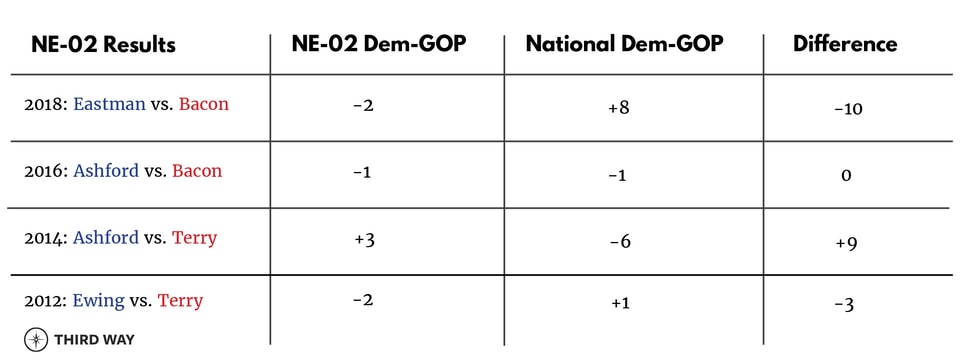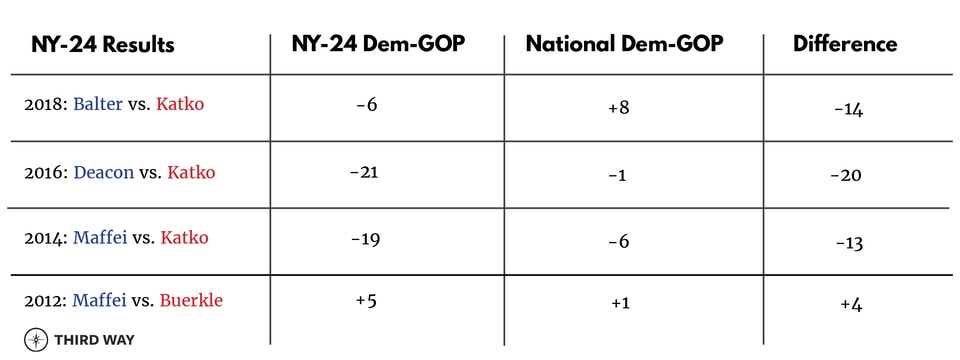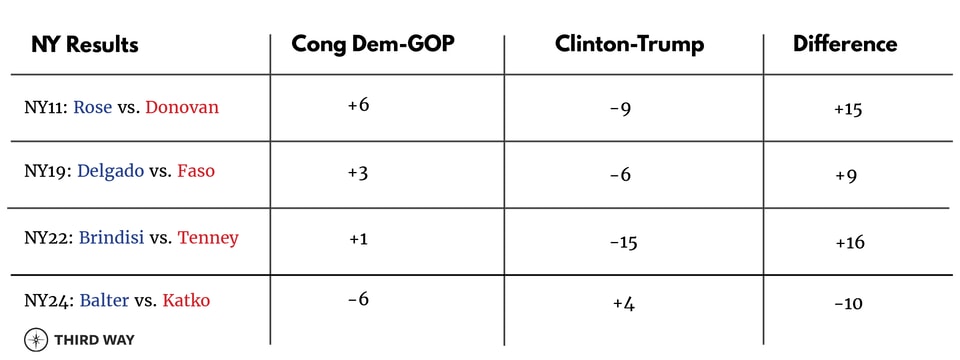Case Study Published December 5, 2018 · 5 minute read
Two Midterm Case Studies: Far Left Politics Fails to Deliver
David de la Fuente

The DCCC tried to put nearly 100 seats in play in their quest to win a House majority. They needed 23 flips. The net gain was 40 seats.
Nearly all of these flips came from mainstream or moderate candidates, like those who were supported by the New Dem PAC (the political arm of the moderate New Democrat Coalition in the House). Forty two Democratic candidates have flipped a district from red to blue. Of those, 33 were endorsed by the New Dem PAC.
Even more strikingly, none of these flips were accomplished by candidates endorsed by insurgent leftwing groups like Our Revolution or Justice Democrats. Moreover, they tended to underperform more mainstream and moderate candidates in similar districts, and those in past, less favorable, cycles. We dug into the data on two of the marquee races that far left groups like Our Revolution and Justice Democrats were to prove that they could persuade swing voters and win elections: Kara Eastman (NE-02) and Dana Balter (NY-24). Notably, these were the only two of the DCCC’s Red to Blue candidates this cycle who ran ads in support of a single-payer healthcare system during the general election campaign. There could be no better test of whether far left politics can win in swing districts.
NE-02
Nebraska’s 2nd Congressional district is centered in Omaha. This is a Romney/Trump district, but it was certainly winnable in a Blue Wave year. Democrats had held the seat as recently as 2014, and Trump won there by only 2 points in 2016. It has a Cook partisan voting index (PVI) of R+4, which makes it a swing district by the Cook Report’s definition.
The Democratic nominee was Kara Eastman, a candidate endorsed by the far left Justice Democrats, who beat moderate former Congressman Brad Ashford in the primary by 3 points. Eastman went on to lose to Republican Congressman Don Bacon by 2 points. Ashford had lost the seat to Bacon in 2016 by 1 point.
While the difference between Ashford and Eastman’s losses might sound small, it is important to remember that 2016 was a cycle in which Democrats lost the national House popular vote by a 1-point margin (mirroring Ashford’s margin in NE-02), while in 2018, Democrats are currently winning the national House popular vote by 8 points. That means Eastman underperformed the national numbers by 10 points.
The following chart tracks the House results on NE-02 since its 2011 redraw. It is a fair comparison across all four cycles as both Democrats and Republicans ran well-supported candidates in each of them.

Eastman had the worst performance for a Democrat this decade in NE-02. If she had tracked the national Democratic numbers as well as either of the two prior Democratic candidates, she would be a Congresswoman-elect.
By comparison, right across the Mississippi River is Iowa’s 3 rd district, which is slightly more Democratic with a Cook PVI of R+1. New Dem-endorsed Cindy Axne won that district this week by 2 points.NY-24
New York’s 24th Congressional district (NY-24) is centered in Syracuse. This is an Obama/Clinton district and has a Cook PVI of D+3.
Going into election night, Republicans held 25 congressional districts that voted for Hillary Clinton in 2016. Only three Republicans won in any of these 25 districts. One of them is Congressman John Katko. His Democratic opponent, Dana Balter, beat a DCCC-endorsed candidate in her primary and was supported by the far left Our Revolution.
It is difficult to compare Balter’s performance to those in past cycles in this district, as Congressman Katko is a well-established moderate Republican (a species that is nearly, but not entirely, extinct). His over-performance in 2014 and 2016 could be interpreted as the voters wanting an independent check on Obama and Clinton, while his relatively moderate reputation helped him to barely survive in 2018. However, most Democratic candidates in these Clinton-won districts managed to win, even against opponents that were equally (or more) established. In fact, Balter had the worst result of any Democrat in these 25 Clinton districts. John Katko is now the House Republican who represents the most Democratic district in the country based on Cook PVI, and is the only Republican in the country with a district more Democratic than R+1.


So as wide swaths of New York was rejecting Trump by electing moderate Democrats, Balter’s brand of politics was rejected by voters in what could have been a majority-making district. Delgado, Rose, and Brindisi prevailed in districts Trump had won by 6, 9, and 15 points, respectively. Dana Balter underperformed Hillary Clinton by 10 points.
